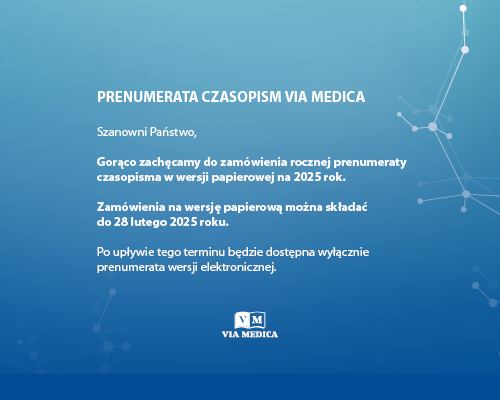Oznaczanie leukocytów w ubogoleukocytarnych składnikach krwi w systemie ADAM r-WBC
Streszczenie
Jedyną skuteczną metodą otrzymania ubogoleukocytarnych składników krwi jest poddanie ich filtracji przy użyciu filtrów antyleukocytarnych. W pracach na temat usuwania leukocytów ze składników krwi stwierdzono, że leukoredukcja nie tylko zapobiega przeniesieniu czynników zakaźnych, niehemolitycznym reakcjom gorączkowym oraz zmniejsza ryzyko alloimmunizacji HLA, ale także zapobiega wystąpieniu oporności na przetaczanie krwinek płytkowych. W centrach krwiodawstwa i krwiolecznictwa (CKiK) na terenie Polski od wielu lat stosuje się procedury usuwania leukocytów ze składników krwi przeznaczonych dla pacjentów wymagających stosowania tylko składników ubogoleukocytarnych. Kryteria akceptacji dla zawartości leukocytów pozwalające zakwalifikować składnik krwi jako ubogoleukocytarny (tzw. zakresy normy) są różne w Europie i w Ameryce Północnej. Według standardów Rady Europy oraz zaleceń Dyrektywy 2002/98/EC składniki krwi przeznaczone do przetoczenia uznaje się za ubogoleukocytarne, jeżeli zawierają poniżej 1 × 106 leukocytów/jednostkę. Norma ta obowiązuje również w Polsce. Wdrażanie europejskich wytycznych w zakresie zmniejszania zawartości leukocytów w krwi i jej składnikach wymaga stosowania szybkich i wiarygodnych metod kontroli jakości. Ostatnio coraz większym zainteresowaniem cieszy się urządzenie ADAM r-WBC (Advanced Detection Accurate Measurement, Nano Entek, Seul, Korea Płd.), stosowane do oznaczania liczby leukocytów w ubogoleukocytarnych koncentratach krwinek czerwonych (UKKCz) i ubogoleukocytarnych koncentratach krwinek płytkowych (UKKP). Urządzenie to jest alternatywą dla dotychczasowych metod liczenia leukocytów w ubogoleukocytarnych składnikach krwi. Celem niniejszej pracy było porównanie wyników oznaczania liczby leukocytów w ubogoleukocytarnych składnikach krwi przy zastosowaniu 3 metod: mikroskopowej, cytometrii przepływowej i automatycznej z wykorzystaniem systemu ADAM r-WBC. Badania prowadzono w dwóch ośrodkach — w Instytucie Hematologii i Transfuzjologii (IHiT) w Warszawie (etap I) oraz w Regionalnym Centrum Krwiodawstwa i Krwiolecznictwa (RCKiK) w Katowicach (etap II, po weryfikacji producenta i ponownej walidacji). W etapie I wykorzystano 94 próbki pobrane z UKKP i 34 próbki z UKKCz, zaś w etapie II użyto 29 próbek UKKP i 26 UKKCz. Wyniki etapu I wykazały, że liczba leukocytów oznaczona za pomocą systemu ADAM r-WBC była znacznie wyższa („fałszywie” zawyżona) niż uzyskana przy użyciu metody mikroskopowej. Pomimo zawyżonych wyników uzyskanych w I etapie badań, w RCKiK w Katowicach urządzenie ADAM r-WBC jest rutynowo stosowane do oznaczania liczby leukocytów w preparatach ubogoleukocytarnych, ponieważ zostało poddane weryfikacji zgodnie z uwagami IHiT i RCKiK, jak również ponownej walidacji.
Słowa kluczowe: leukoredukcjaubogoleukocytarne składniki krwisystem ADAM r-WBC





